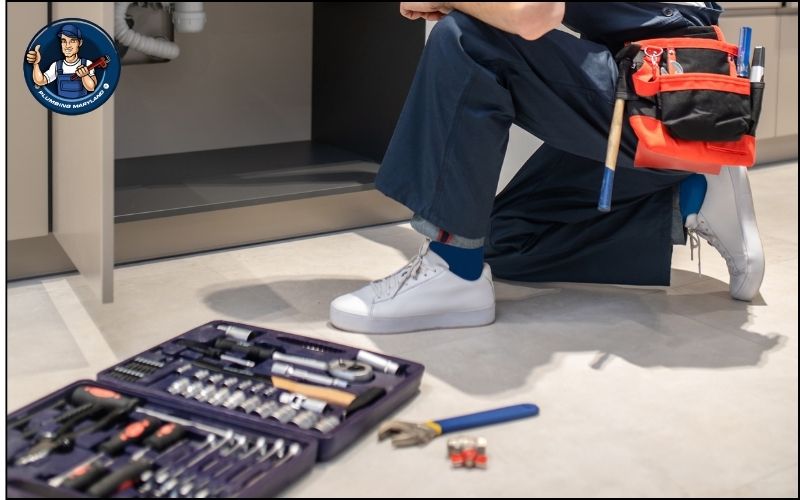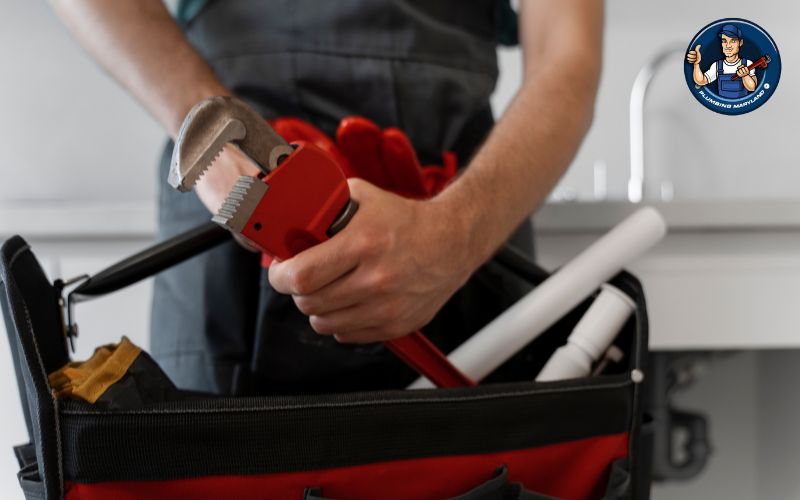When it comes to plumbing, having the right tools can make all the difference, whether you’re a DIY homeowner fixing a leaky faucet or a professional plumber taking on complex repairs. Plumbing tools are designed for the specific demands of the job—providing grip, creating tight seals, cutting pipes, and removing clogs. Knowing which tools are most essential in plumbing can save you time and effort while ensuring quality results.
This article covers five of the most common tools that plumbers rely on for various tasks. By understanding the purpose and function of these tools, you’ll be better prepared to tackle minor plumbing repairs on your own and appreciate the professional equipment your plumber uses to provide top-notch service.

1. Pipe Wrench
One of the most iconic and widely used tools in plumbing is the pipe wrench. Known for its adjustable jaw and heavy-duty design, the pipe wrench allows plumbers to grip and turn pipes securely. Its long handle provides extra leverage, making it ideal for working with larger pipes that require a firm grip. Pipe wrenches are available in various sizes, and plumbers often use them in pairs—one to hold the pipe and the other to turn the fitting.
Key Uses:
- Loosening and tightening pipes and fittings: The adjustable jaw grips pipes tightly, making it perfect for work on threaded pipes and fixtures.
- Handling high-pressure connections: The sturdy construction makes the pipe wrench effective on water supply lines and gas lines, which need secure connections.
Tips for Homeowners:
When using a pipe wrench, apply pressure evenly to avoid damaging the pipe. Also, consider padding the wrench’s jaws if you’re working with softer metals like copper to avoid marring the surface.
2. Plumber’s Tape (Teflon Tape)
Teflon tape, also known as plumber’s tape, is a must-have for any plumbing job that involves threaded pipes. This thin, non-adhesive tape is wrapped around the threads of a pipe to create a watertight seal, preventing leaks and ensuring a snug fit between connected pieces. Plumber’s tape is inexpensive, easy to apply, and available in various thicknesses.
Key Uses:
- Sealing threaded joints: Teflon tape fills the gaps between pipe threads, creating a secure, leak-resistant connection.
- Reducing friction: By lubricating threads, the plumber’s tape makes it easier to tighten connections fully, reducing the risk of over-tightening and damage.
Tips for Homeowners:
Wrap Teflon tape in the direction of the threads (usually clockwise) so it stays in place when the pipes are connected. Use two or three layers for a strong seal, and avoid applying it to fittings that don’t use threads, as this will be ineffective.
3. Plunger
A simple yet indispensable tool, the plunger is a staple in every household. It’s a cost-effective solution for removing clogs from sinks, toilets, showers, and drains by creating a vacuum to dislodge blockages. Plungers come in different shapes and sizes to match various types of drains; for example, a flange plunger is best for toilets, while a cup plunger works well on sinks and bathtubs.
Key Uses:
- Clearing blockages: Plungers are designed to remove clogs without the need for chemicals, making them an environmentally friendly choice.
- Preventing slow drains: Regular use of a plunger can keep water flowing smoothly by breaking up potential buildup before it becomes a full blockage.
Tips for Homeowners:
For best results, ensure a tight seal between the plunger and the drain, and use short, forceful thrusts to create the necessary suction. Remember to keep a separate plunger for sinks and toilets to maintain hygiene.
4. Pipe Cutter
A pipe cutter is a specialized tool used for cutting pipes to the desired length. Unlike a saw, which can leave rough edges, a pipe cutter makes clean, precise cuts, ensuring smooth connections. Pipe cutters come in various types depending on the material you’re working with; for instance, a copper pipe cutter is ideal for soft metals, while a PVC cutter is designed for plastic pipes.
Key Uses:
- Cutting pipes to length: Precise cuts are crucial for ensuring that pipes fit properly within a plumbing system.
- Smoothing edges: Some pipe cutters come with a built-in deburring tool, which removes rough edges for a clean finish.
Tips for Homeowners:
To use a pipe cutter, clamp it around the pipe and tighten it gradually while rotating the cutter around the pipe. This produces a clean, even cut without damaging the pipe. When working with copper pipes, consider using a mini cutter for tight spaces.
5. Adjustable Wrench
An adjustable wrench is a versatile tool every plumber should have on hand. With a movable jaw, this wrench can be adjusted to fit a wide range of nuts, bolts, and other fittings. It’s particularly useful for working with compression fittings, supply lines, and fixture bases. Adjustable wrenches are available in various sizes, making them ideal for tackling diverse plumbing tasks.
Key Uses:
- Tightening and loosening nuts and bolts: The adjustable jaw makes it easy to secure or release different sizes of nuts and bolts without needing multiple wrenches.
- Working on compression fittings: Compression fittings require precise torque to prevent leaks, and the adjustable wrench is perfect for applying just the right amount of pressure.
Tips for Homeowners:
When using an adjustable wrench, avoid applying excessive force, as this can round off the edges of nuts and bolts. Choose the correct size for your task and make sure the wrench is fully tightened around the fitting to prevent slipping.
Why These Tools Matter for Quality Plumbing
Each of these tools serves a unique purpose and is designed to handle the specific challenges plumbers face daily. Using high-quality tools not only saves time but also ensures that repairs and installations are secure, leak-free, and long-lasting. For example, a pipe wrench provides the necessary leverage to work with large pipes, while Teflon tape ensures that joints are watertight.
Whether it’s tackling small DIY repairs or larger plumbing projects, these essential tools empower both homeowners and professionals to work with greater confidence and efficiency. However, for major plumbing issues or when specialized knowledge is required, hiring a professional plumber equipped with the right tools and skills is the best approach.

Conclusion
In summary, a good set of plumbing tools can make all the difference in achieving reliable results. From pipe wrenches and plumber’s tape to plungers, pipe cutters, and adjustable wrenches, each of these tools plays an essential role in handling the challenges that come with plumbing projects.
Having these tools on hand is a great way to address minor plumbing issues, but for complex problems, it’s best to reach out to a professional. At Maryland Plumbing, our team is equipped with top-quality tools and expertise to handle everything from small repairs to extensive installations.
Ready to solve your plumbing issues with confidence? Contact Maryland Plumbing today for a free consultation or to schedule a service appointment! We’re here to make sure your plumbing system is efficient, safe, and reliable.
